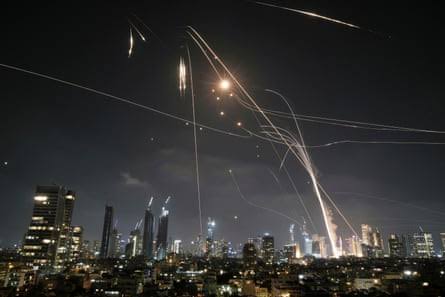Iran’s recent missile and drone attacks on Israel have raised significant concerns about the effectiveness of Israel’s renowned Iron Dome defense system. While the Iron Dome has been instrumental in intercepting numerous threats, several factors have contributed to some Iranian projectiles breaching Israel’s defenses.
Iran’s Strategic Approach
Iran’s strategy involved launching a massive barrage of over 400 ballistic missiles and hundreds of drones towards Israel. This overwhelming volume aimed to saturate Israel’s multi-layered defense systems, including the Iron Dome, David’s Sling, and Arrow systems. The sheer number of incoming threats posed a logistical challenge, forcing the defense systems to prioritize targets and potentially allowing some to slip through.
Iran has developed and deployed advanced missile technology, such as the Fattah-1 hypersonic missile. These missiles travel at speeds exceeding Mach 13 and are designed to maneuver within and outside the Earth’s atmosphere, making them particularly challenging for traditional missile defense systems to intercept. The rapid speed and unpredictable trajectory of such missiles reduce the reaction time for interception, increasing the likelihood of some missiles reaching their targets.
Weapons Systems Used by Iran
Iran used a range of advanced and varied weapons in its attack, drawn from its growing arsenal of domestically developed missiles and drones:
1. Ballistic Missiles form the backbone of Iran’s long-range strike capability:
Shahab-3 – A medium-range ballistic missile with a range of ~2,000 km
Emad – A more accurate variant of the Shahab with maneuverable reentry capabilities
Khaybar Shekan – A solid-fuel missile optimized for fast launches and evasive maneuvers
Fattah-1 (Hypersonic) – Claimed to travel at speeds up to Mach 13, capable of maneuvering inside and outside the atmosphere, making it extremely difficult to intercept.
2. Cruise Missiles
Slower than ballistic missiles but harder to detect due to their low-altitude flight profiles:
Soumar – Based on Soviet-era designs, long-range and precision-capable
Ya-Ali – Smaller cruise missile designed for strategic strikes
3. Drones (UAVs)
Iran’s drone capabilities are among the most extensive in the region:
Shahed-136 (Kamikaze Drone) – Used in large swarms; cheap, GPS-guided, and difficult to detect
Mohajer-6 – Armed reconnaissance drone capable of launching guided munitions
Ababil Series – Variants used for surveillance and attack purposes
These drones were deployed en masse to overwhelm radar and interception systems. Many served as decoys to force Iron Dome systems to engage, allowing faster ballistic missiles to pass through.
Limitations of the Iron Dome
The Iron Dome is highly effective against short-range threats, such as rockets fired from Gaza. However, its capacity to intercept long-range ballistic missiles is limited. While Israel’s defense systems, including the Arrow and David’s Sling, are designed to counter such threats, the volume and sophistication of the recent Iranian attacks have tested the limits of these systems.
Despite the high interception rates, several Iranian missiles have successfully struck Israeli cities, including Tel Aviv and Petah Tikva, causing civilian casualties and significant infrastructure damage. These breaches highlight vulnerabilities in Israel’s defense infrastructure and underscore the challenges posed by advanced missile technology.
While Israel’s Iron Dome and other defense systems have demonstrated remarkable effectiveness, the recent Iranian missile and drone attacks have exposed certain limitations. As the clash rages on it is expected that Iran and Israel both will have a number of surprises in store for each other.
